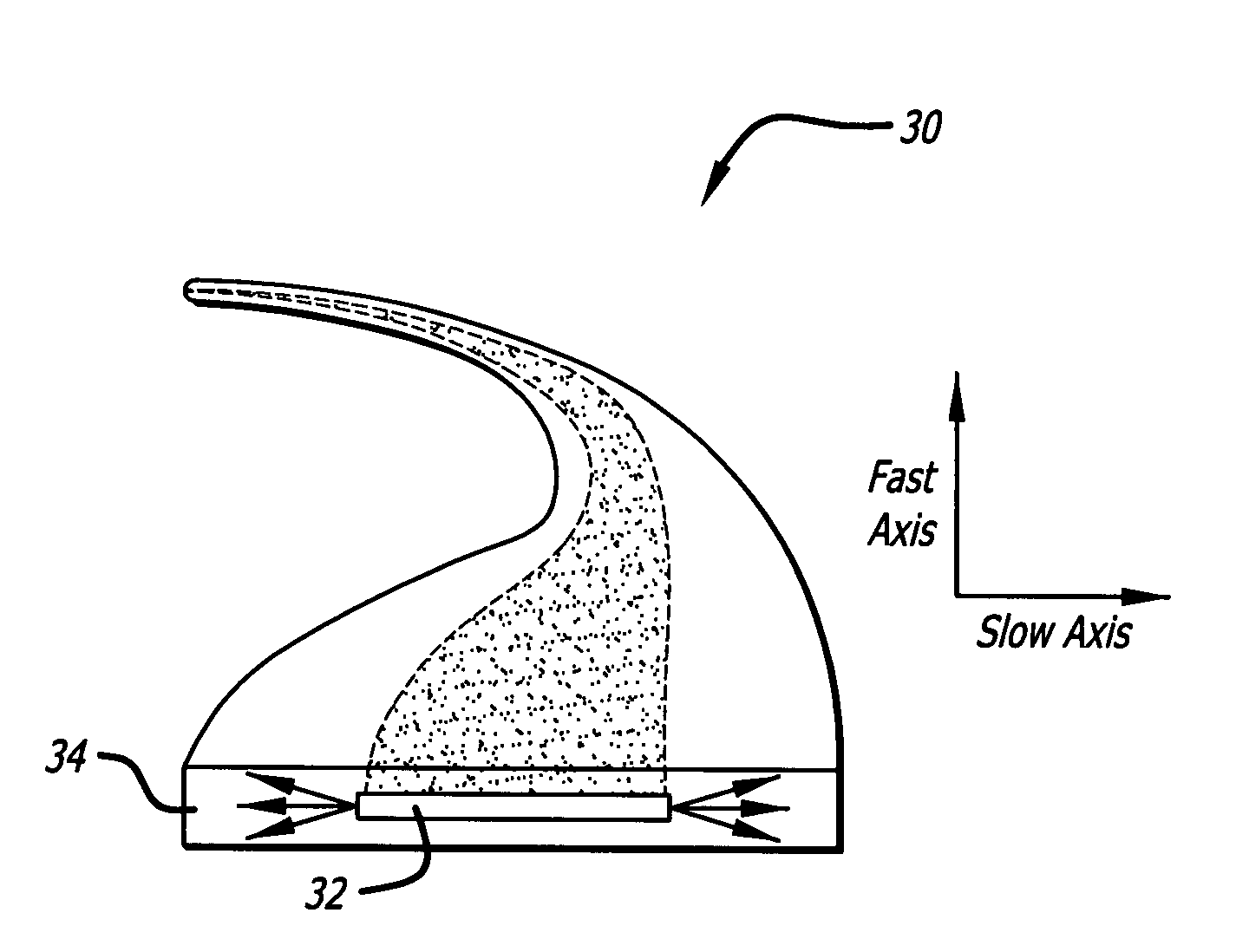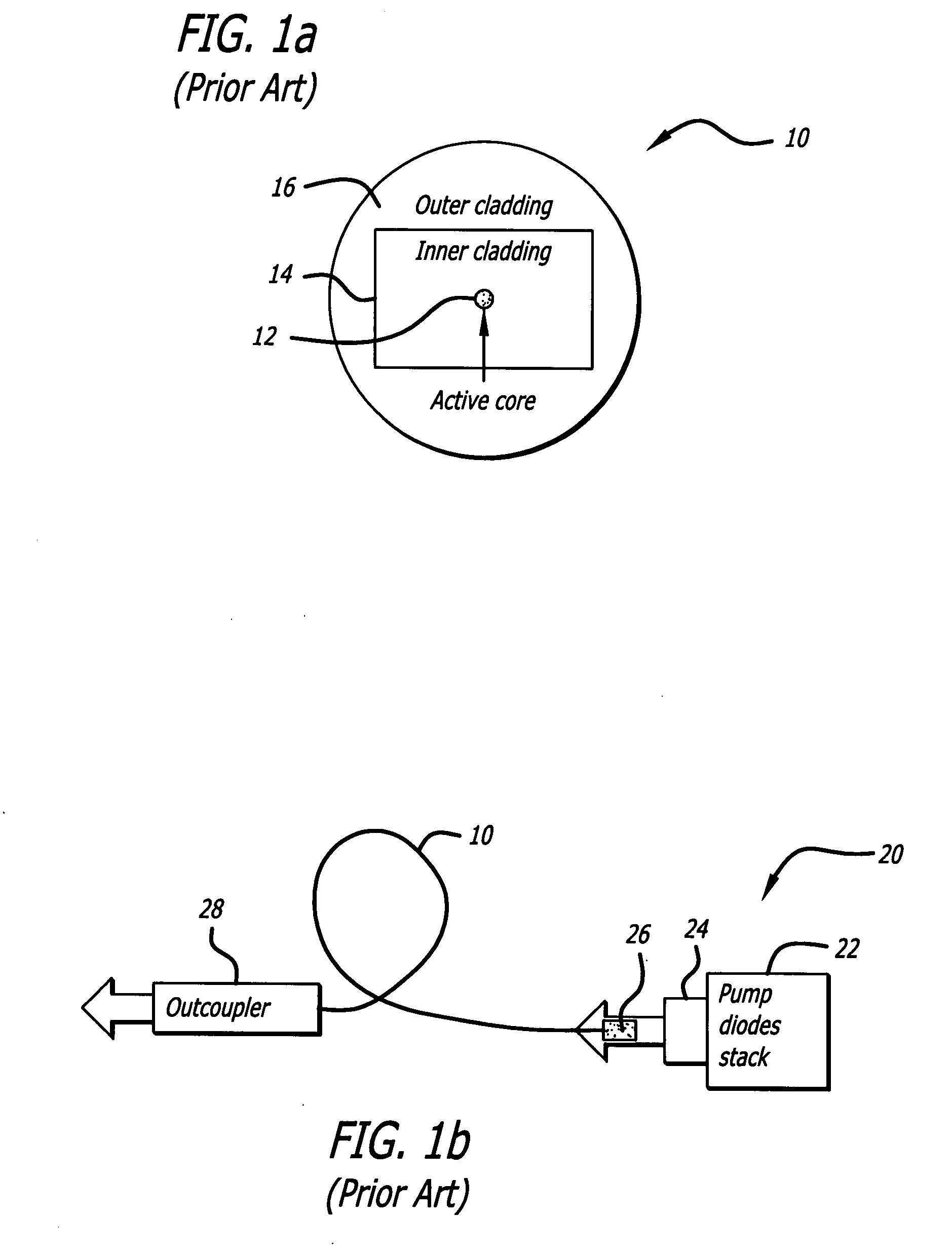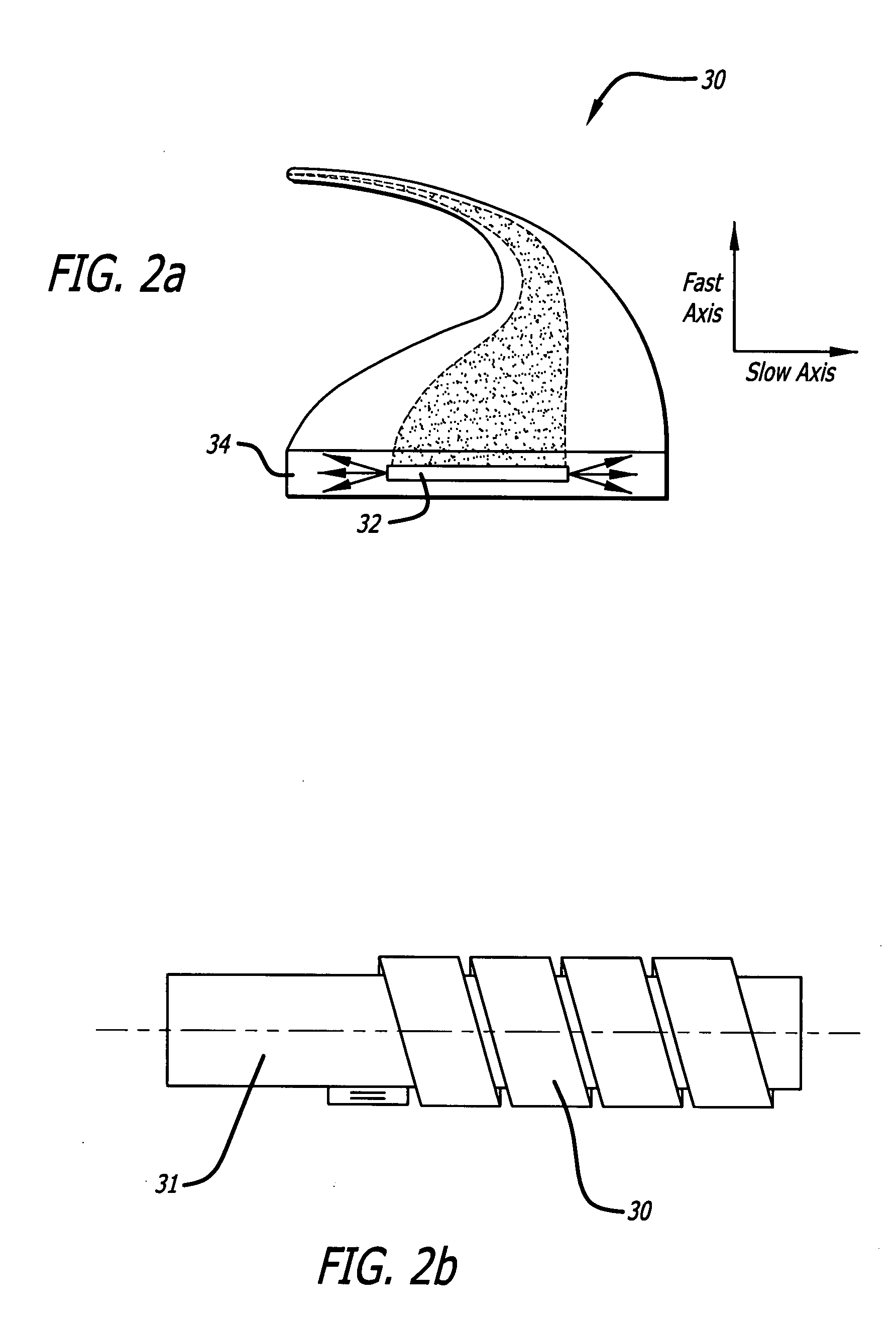Method and apparatus for generation and amplification of light in a semi-guiding high aspect ratio core fiber
a technology of semi-guiding and high aspect ratio, applied in the field of laser systems, can solve the problems of reducing beam quality, poor optical quality, and scaling laser output power, and achieve the effects of high aspect ratio cross-section, high beam quality, and high slow-axis beam quality
- Summary
- Abstract
- Description
- Claims
- Application Information
AI Technical Summary
Benefits of technology
Problems solved by technology
Method used
Image
Examples
Embodiment Construction
[0029]Illustrative embodiments and exemplary applications will now be described with reference to the accompanying drawings to disclose the advantageous teachings of the present invention.
[0030]While the present invention is described herein with reference to illustrative embodiments for particular applications, it should be understood that the invention is not limited thereto. Those having ordinary skill in the art and access to the teachings provided herein will recognize additional modifications, applications, and embodiments within the scope thereof and additional fields in which the present invention would be of significant utility.
[0031]FIG. 1a is a simplified schematic of a conventional cladding-pumped active fiber 10. Active fibers are typically manufactured in a double-clad configuration, having a small round core 12 capable of propagating a single mode or perhaps a few modes. The core 12 is surrounded by two claddings: an inner cladding 14 that directly surrounds the core ...
PUM
| Property | Measurement | Unit |
|---|---|---|
| diameter | aaaaa | aaaaa |
| power | aaaaa | aaaaa |
| power | aaaaa | aaaaa |
Abstract
Description
Claims
Application Information
 Login to View More
Login to View More - R&D
- Intellectual Property
- Life Sciences
- Materials
- Tech Scout
- Unparalleled Data Quality
- Higher Quality Content
- 60% Fewer Hallucinations
Browse by: Latest US Patents, China's latest patents, Technical Efficacy Thesaurus, Application Domain, Technology Topic, Popular Technical Reports.
© 2025 PatSnap. All rights reserved.Legal|Privacy policy|Modern Slavery Act Transparency Statement|Sitemap|About US| Contact US: help@patsnap.com



